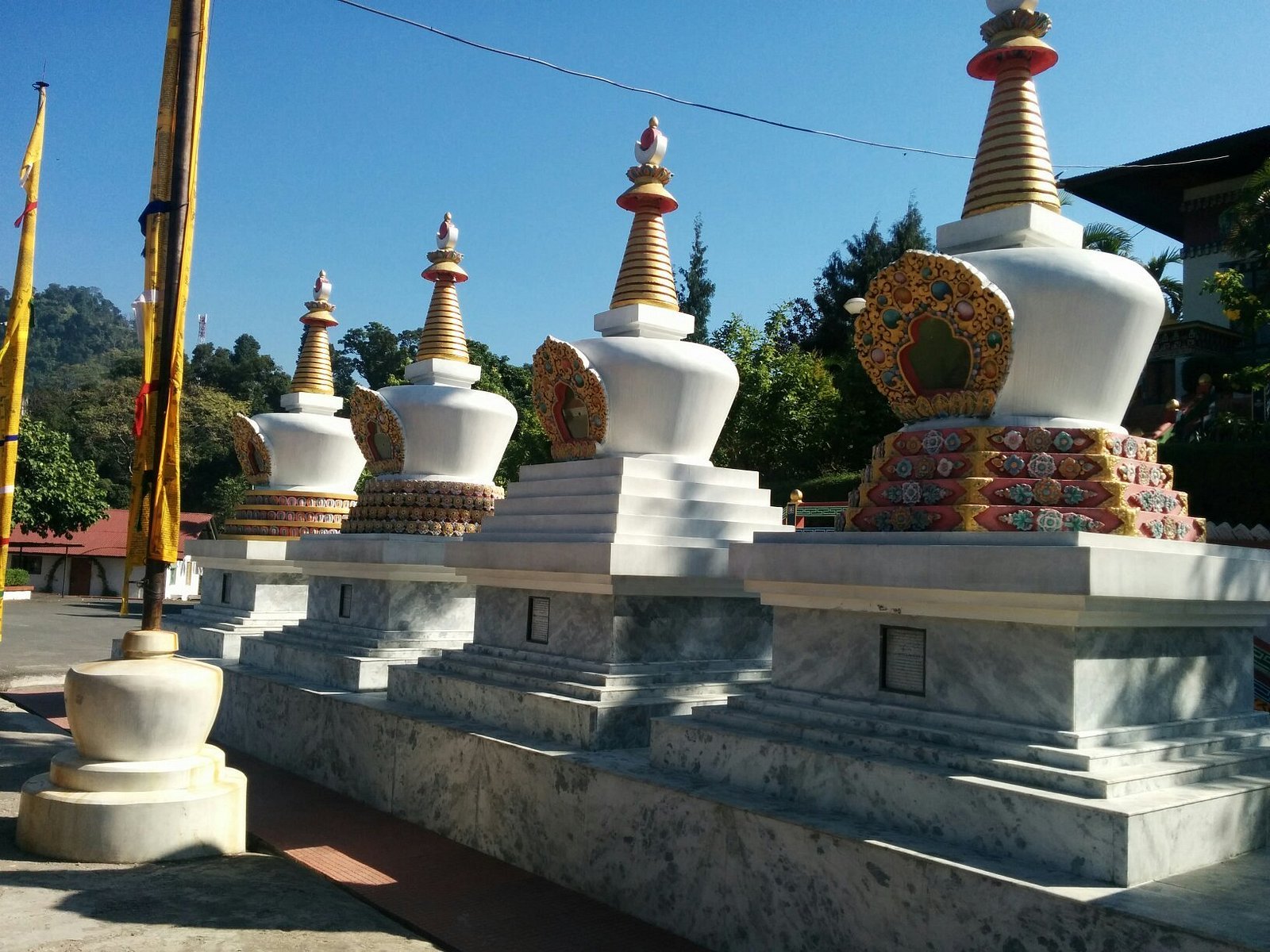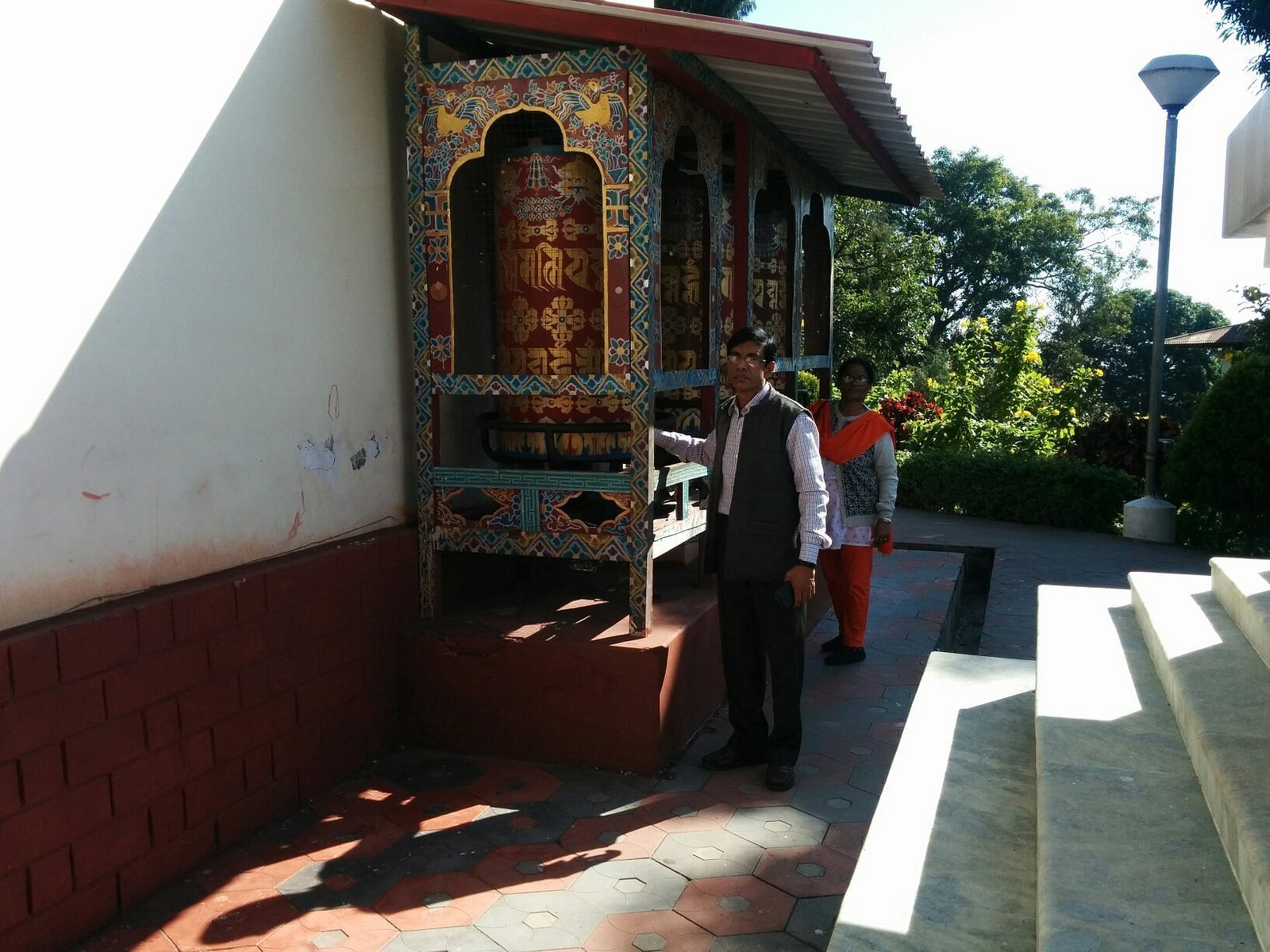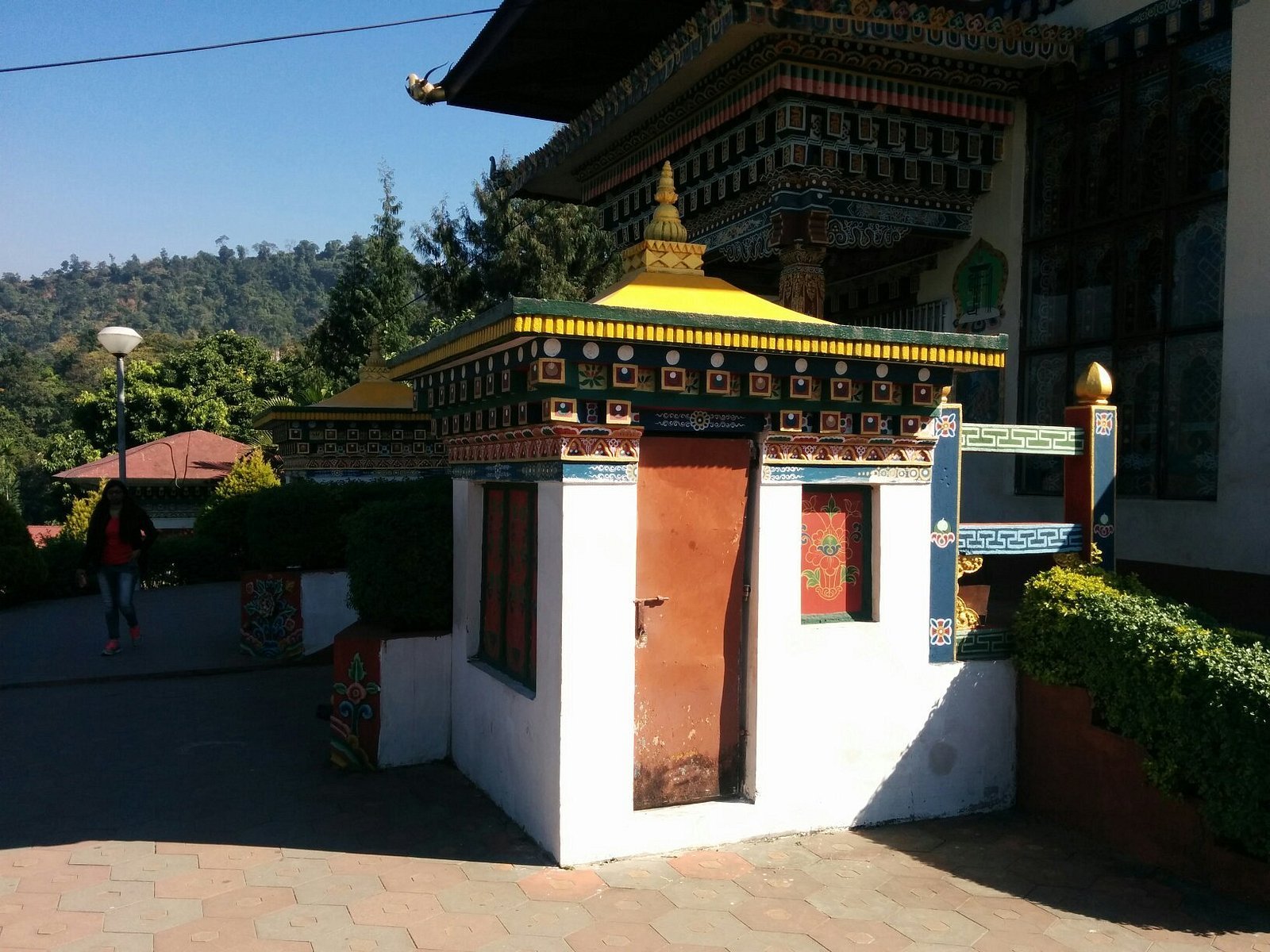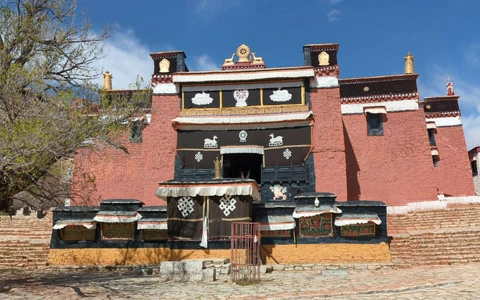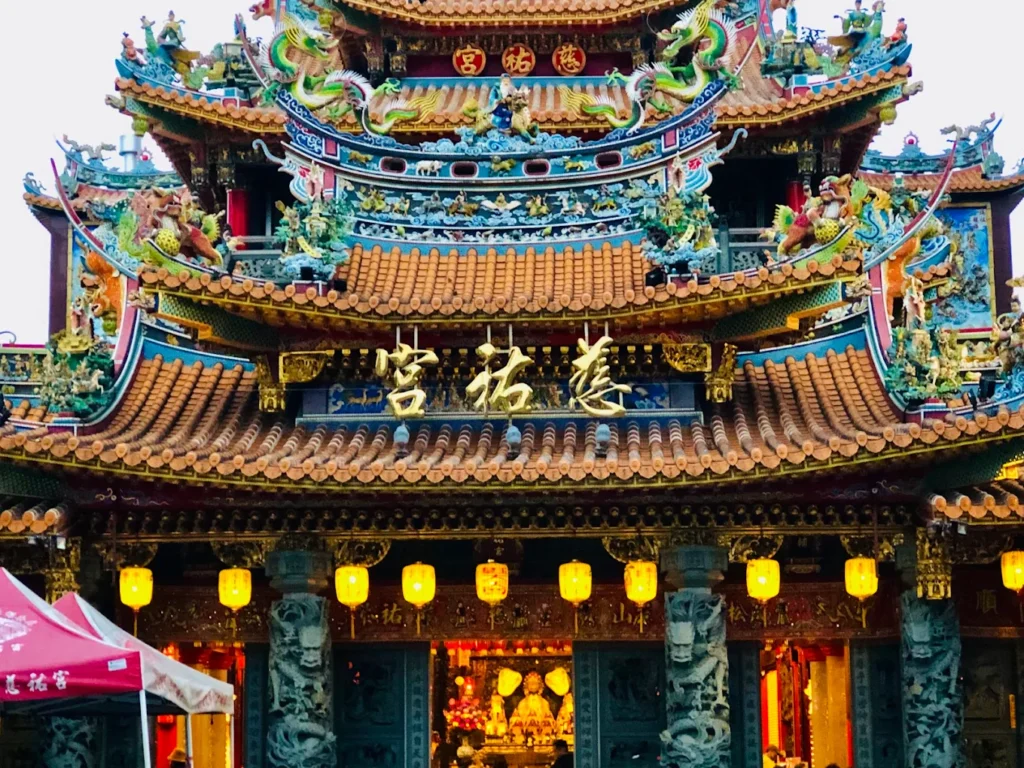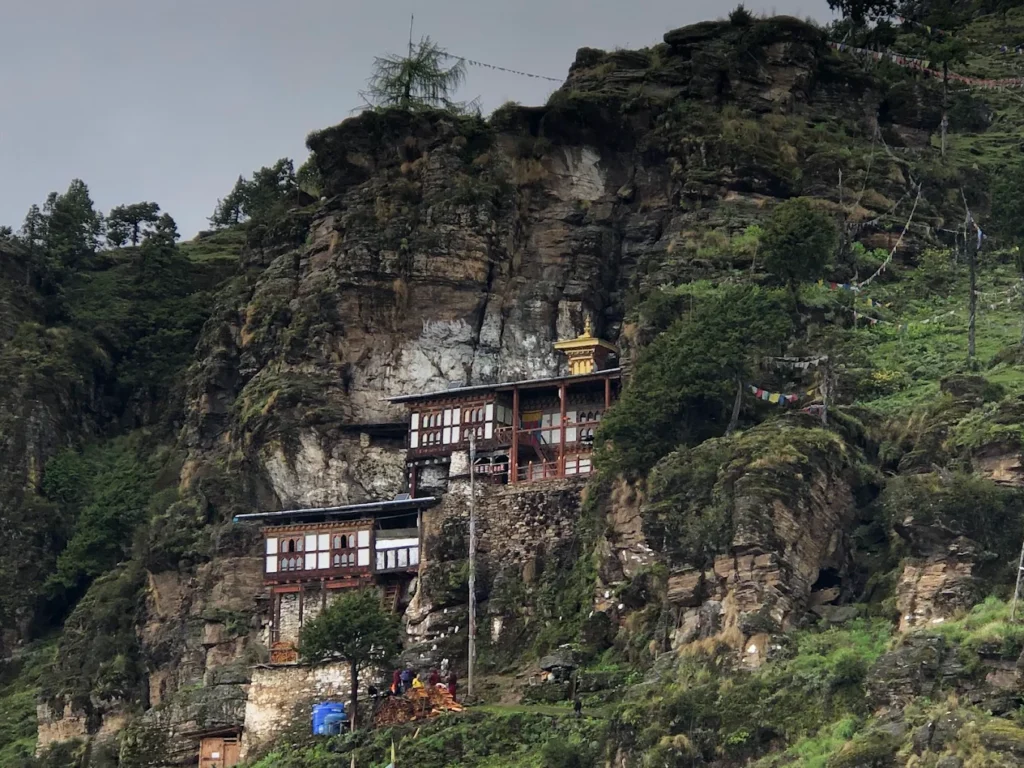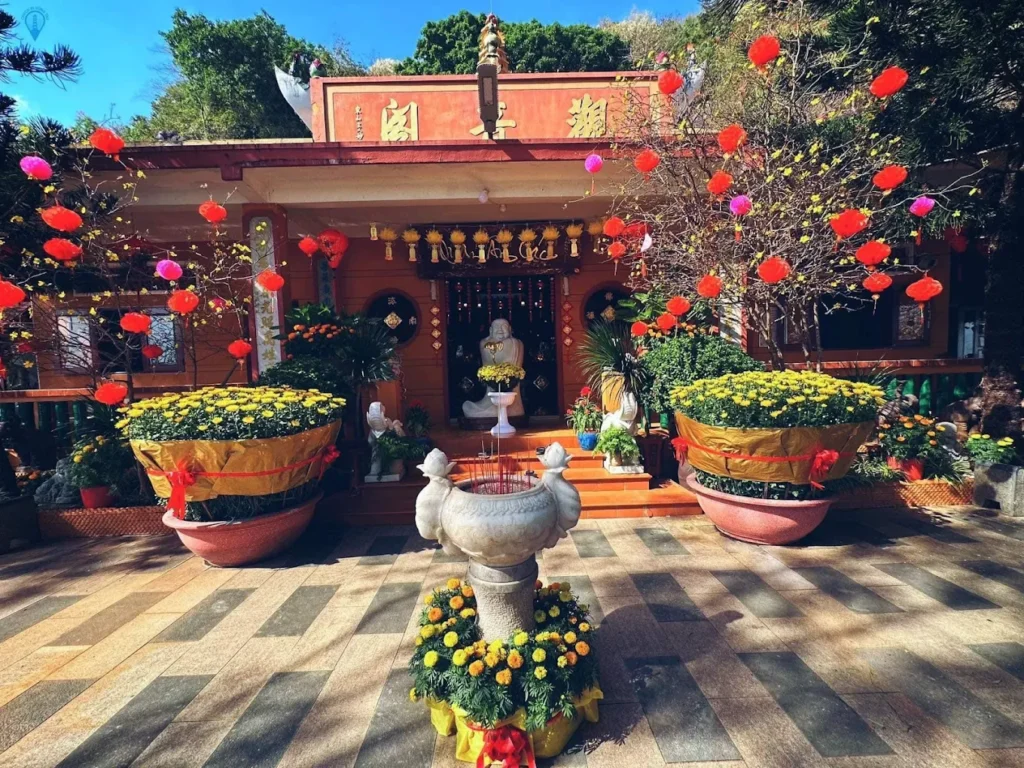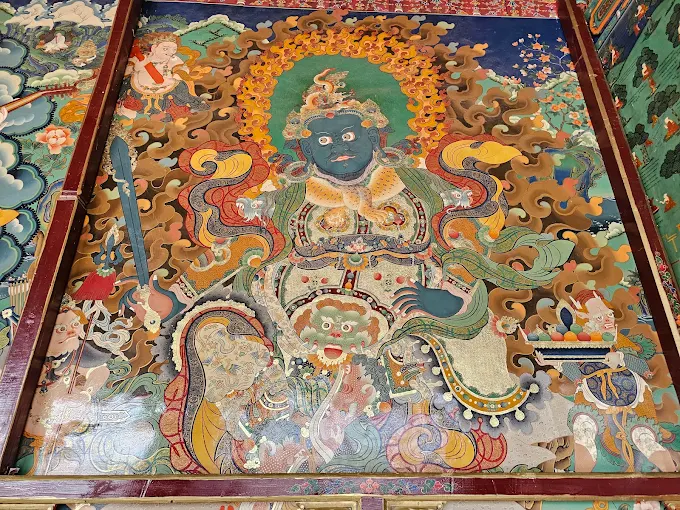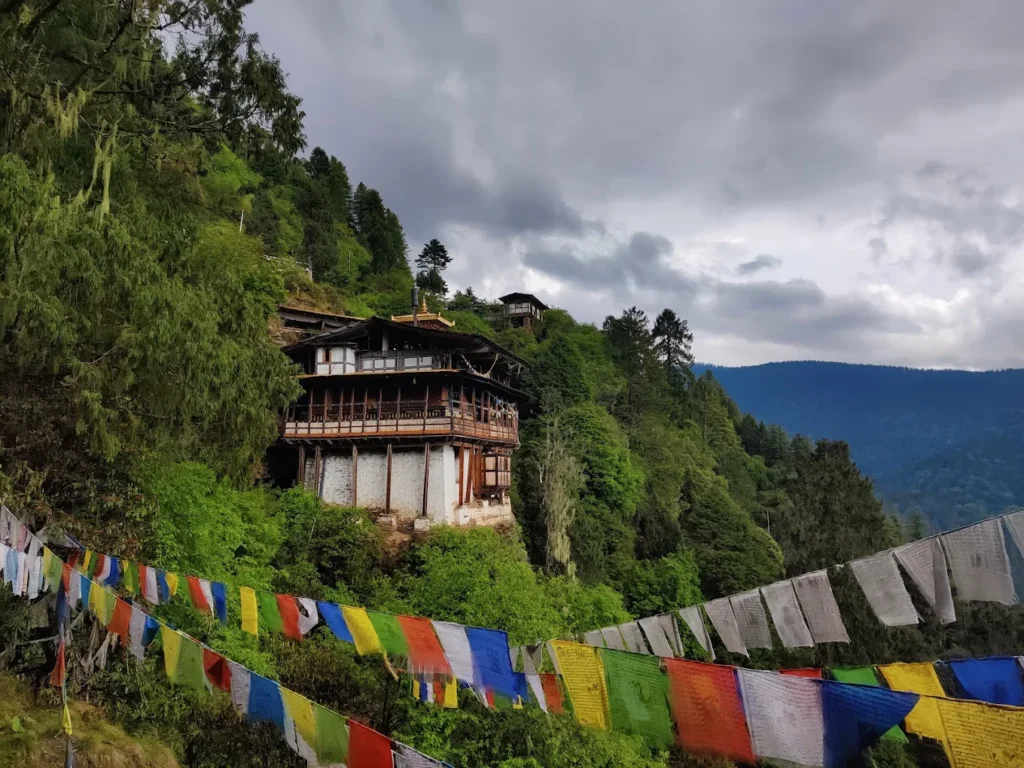Phuntsoling Monastery: The Hidden Murals of Tibet’s Jonangpa Legacy
Phuntsoling Monastery, perched at the edge of a towering sand dune in Lhatse County, Tibet, radiates a quiet mystique, its 15th-century murals whispering tales of the Jonangpa sect’s esoteric wisdom. Founded in 1615 by the scholar Taranatha, this sacred haven, once the heart of the Jonangpa tradition, now houses 50 Gelugpa monks, its walls preserving ancient frescoes spared during turbulent times. Set against the Yarlung Tsangpo River’s dramatic valley, with ruined fortifications looming above, Phuntsoling’s blend of spiritual depth and photogenic allure captivates travelers and researchers. This immersive listing unveils Phuntsoling’s essence, guiding you through its storied past, architectural treasures, sacred rituals, and practical visitor insights, offering a journey into a remote gem of Tibetan Buddhism.
The Esoteric Soul of Phuntsoling
Essence of Phuntsoling Monastery
Phuntsoling Monastery glows with the spiritual legacy of the Jonangpa sect, embodying the Kagyu tradition’s exploration of emptiness through the shentong philosophy. Established in 1615, it became a Jonangpa stronghold under Taranatha, a master whose teachings influenced Mongolia’s Buddhist leaders. Its defining feature—well-preserved 15th-century murals, saved by local ingenuity during the Cultural Revolution—marks it as a living canvas of Tibetan art. Nestled beneath a sand dune, Phuntsoling’s serene yet dramatic setting draws those seeking cultural and spiritual depths.
- Spiritual Core: Once the Jonangpa sect’s heart, now a Gelugpa monastery.
- Iconic Feature: 15th-century murals, a testament to artistic survival.
- Cultural Role: A bridge between Jonangpa heritage and Gelugpa practice.
Historical Evolution
Phuntsoling’s story began in 1615 when Taranatha, a Jonangpa scholar, expanded an earlier site founded by Dolpopa Sherab Gyaltsen (1292–1361), whose shentong philosophy challenged Buddhist orthodoxy. By the 17th century, it housed 3,300 monks and 35 halls, a vibrant center until the fifth Dalai Lama, favoring the Gelugpa school, forcibly converted it in the 1650s. During the Cultural Revolution, locals protected its murals with clay and dung, sparing them destruction that razed its fortifications and library. Restored in the 1980s, Phuntsoling was named a national cultural relic in 2006, its modest revival led by 50 monks.
- Founding: Built in 1615 by Taranatha, rooted in Jonangpa tradition.
- Conversion: Forced to Gelugpa in the 17th century.
- Restoration: Revived in 1980s, protected as a national relic.
Cultural Impact
Phuntsoling’s influence lies in its Jonangpa legacy, with Dolpopa’s shentong philosophy sparking seven centuries of debate among Buddhist scholars. Its murals, blending Nepalese and Tibetan styles, offer insights into 15th-century art, studied by historians via HimalayanArt.org. Taranatha’s writings and Mongolia’s Bogd Gegeen lineage trace back to Phuntsoling, extending its reach. Locally, it remains a pilgrimage site, while globally, its surviving woodblocks in Derge preserve Jonangpa texts.
- Scholarship: Shentong debates shape Buddhist philosophy.
- Artistic Legacy: Murals inform studies of Nepalese-Tibetan art.
- Global Reach: Influences Mongolia and Jonangpa diaspora.
Signature Legacy
Phuntsoling’s 15th-century murals, preserved through local efforts, are its crowning jewel, depicting Sakyamuni’s life and Jonangpa deities with vibrant pigments. A bronze Sakyamuni statue, cast in 7th-century Bodhgaya and restored after losing an ear in the Cultural Revolution, anchors the assembly hall. Legends tell of an old woman safeguarding the statue’s ear, returning it in the 1980s to complete its restoration. These relics, alongside ruined fortifications, define Phuntsoling’s enduring mystique.
- Murals: 15th-century frescoes, vividly preserved.
- Sakyamuni Statue: 7th-century bronze, restored relic.
- Fortifications: Ruined dzong, a photogenic backdrop.
Community and Global Reach
Locals revere Phuntsoling, offering prayers at the Sakyamuni statue during harvests and life events. The 50 monks maintain its spiritual life, guiding pilgrims and preserving relics. The Tibetan diaspora honors its Jonangpa roots, while scholars study its murals and texts, with archives like Mandala Collections documenting its art. The monastery’s festival, though closed to outsiders, draws regional pilgrims, reinforcing its communal role.
- Local Devotion: Prayers at Sakyamuni statue.
- Monastic Community: 50 monks uphold traditions.
- Global Scholarship: Studied for art and Jonangpa texts.
Architectural Treasures of Phuntsoling
Distinctive Design
Phuntsoling’s architecture, once sprawling across 37,800 square meters, blended Jonangpa simplicity with defensive elements, its red assembly hall dwarfed by a massive sand dune. The original complex, with 35 halls and a chanting hall, featured whitewashed walls and Nepalese-inspired roofs. Today, the restored assembly hall and 16 smaller lhakangs (chapels) stand, surrounded by monks’ quarters and ruined fortifications, evoking a fortress-like resilience against the Yarlung Tsangpo’s valley.
- Original Layout: 35 halls, now reduced to assembly hall and lhakangs.
- Style: Jonangpa with Nepalese influences.
- Setting: Beneath a sand dune, overlooking the river.
Signature Structures
The assembly hall, a three-story red building, houses a 7th-century Sakyamuni statue and murals narrating his life. The Thokchey Chenpo Lhakang enshrines Chenresig (Avalokiteshvara), while the inner sanctum holds Mikyoba (Akshobhya) and eight bodhisattvas. The ruined fortifications, perched on a crag, offer panoramic valley views, with a dzong across the river adding drama. The Yishang Hall’s second-floor gallery displays mandala murals, a testament to Jonangpa artistry.
- Assembly Hall: Sakyamuni statue and murals.
- Thokchey Lhakang: Chenresig statue, sacred chapel.
- Fortifications: Ruined dzong with valley views.
Artisanal Mastery
Phuntsoling’s murals, painted in the 15th century, showcase Nepalese-Tibetan artistry, using mineral pigments to depict Sakyamuni’s life and Jonangpa deities. The Sakyamuni statue, cast in Bodhgaya, reflects 7th-century bronze techniques, its restoration a local triumph. Wooden beams in the assembly hall, carved with lotus motifs, echo Nepalese carpentry, while thangkas of the fifth Dalai Lama and Tsongkhapa adorn chapels. These works, protected by clay during the Cultural Revolution, remain vibrant.
- Murals: Nepalese-Tibetan frescoes, vividly preserved.
- Sakyamuni Statue: 7th-century bronze, restored.
- Thangkas: Gelugpa figures, finely painted.
Hidden Architectural Gems
Phuntsoling hides subtle treasures amidst its ruins. The Mani Stone Wall, etched with mantras, lines the courtyard, inviting reflection. The third-floor Russian gate Buddhist hall, with faded mandala murals, offers a glimpse of lost grandeur. A pet yak, often seen bounding down stairs, adds a quirky charm, as noted by visitors. The ruined Jonang Kumbum, 6 km south, though off-limits, whispers of Dolpopa’s 14th-century vision.
- Mani Stone Wall: Mantra-etched stones in courtyard.
- Russian Gate Hall: Faded mandala murals.
- Pet Yak: Quirky resident, local favorite.
Preservation and Evolution
Preserving Phuntsoling’s murals and statues is a delicate task, with locals and monks using traditional pigments for repairs. The 1980s restoration, funded by state grants, rebuilt the assembly hall, but fortifications remain unrestored. The monastery’s designation as a national relic in 2006 ensures protection, though climate exposure threatens frescoes. Global efforts, including Derge’s woodblock archives, safeguard Jonangpa heritage.
- Restoration: Assembly hall rebuilt in 1980s.
- Relic Protection: Murals and statues preserved.
- Challenges: Climate and limited funds.
Sacred Rites and Jonangpa Echoes
Sacred Daily Rites
Each dawn, Phuntsoling stirs with chants, as monks recite sutras in the assembly hall, their voices blending with butter lamp smoke. Pilgrims offer khatas (silk scarves) at the Chenresig statue, their prayers echoing through mural-lined walls. The hum of prayer wheels outside creates a meditative rhythm. These Gelugpa rites, layered with Jonangpa echoes, envelop visitors in a sacred ambiance.
- Chanting: Morning sutras in assembly hall.
- Offerings: Khatas and lamps at Chenresig statue.
- Ambiance: Incense and prayer wheel hum.
Unique Spiritual Practices
Phuntsoling’s monks perform Gelugpa rituals, but Jonangpa influences linger in Kalachakra tantra recitations, tied to Yumo Mikyo’s 11th-century teachings. Pilgrims walk the kora around the assembly hall, spinning prayer wheels for merit, a practice rooted in Jonangpa tradition. The Sakyamuni statue is central to blessing ceremonies, with monks consecrating amulets for devotees. These rituals bridge Jonangpa and Gelugpa legacies.
- Kalachakra Tantra: Jonangpa-inspired recitations.
- Kora: Circumambulation for merit.
- Blessings: Amulets consecrated at Sakyamuni statue.
Vibrant Festival Traditions
Phuntsoling hosts a festival in the fourth lunar month (June/July), drawing lamas and pilgrims for prayers and celebrations, though closed to visitors. The Saga Dawa festival, marking Buddha’s enlightenment, features lamp offerings and kora walks, with monks performing Cham dances. Locals share sweet tea and shapathu (yak-meat noodles), fostering community spirit. These events, though modest, echo Phuntsoling’s vibrant past.
- Fourth Lunar Month: Closed festival with prayers.
- Saga Dawa: Lamp offerings and Cham dances.
- Community Role: Shared meals unite locals.
Visitor Engagement
Visitors can offer khatas or butter lamps at the Chenresig statue, guided by monks, immersing in Phuntsoling’s spiritual life. Photography is permitted in the assembly hall, capturing murals’ vivid details, but flash is discouraged. Joining the kora allows travelers to walk with pilgrims, feeling the monastery’s sacred pulse. Monks may share stories of Taranatha, enriching the visit.
- Offerings: Khatas and lamps, guided by monks.
- Photography: Allowed, no flash near murals.
- Kora Participation: Walk with pilgrims for connection.
Monastic and Community Roles
Phuntsoling’s 50 monks maintain daily rites, study Gelugpa texts, and guide visitors, preserving Jonangpa relics. They offer blessings for local harvests or life events, strengthening community ties. The monastery trains young monks in thangka painting, ensuring artistic continuity. This bond keeps Phuntsoling a living spiritual center, despite its historical shifts.
- Monastic Duties: Rites, study, and guidance.
- Community Ties: Blessings for local events.
- Art Preservation: Training in thangka painting.
Visiting Phuntsoling Monastery
Navigating to Phuntsoling Monastery
Phuntsoling lies in Phuntsoling Township, Lhatse County, 105 km west of Shigatse and 66 km from Lhatse, near the Yarlung Tsangpo River. From Lhasa, a 280-km drive via the G318 highway takes 5 hours to Shigatse, followed by a 2-hour drive (105 km) to Phuntsoling via the Friendship Highway, turning north at Km4977/8. The monastery’s red hall, dwarfed by a sand dune, marks the destination.
- From Lhasa: 5-hour drive to Shigatse, 2 hours to Phuntsoling.
- From Shigatse: 2-hour drive, 105 km west.
- Landmarks: Sand dune, Yarlung Tsangpo River.
Address of Phuntsoling Monastery
- Location: Phuntsoling Township, Lhatse County, Shigatse, Tibet Autonomous Region, China.
- Coordinates: 29.0833° N, 87.5833° E.
- Context: Rural setting, near Friendship Highway.
Visiting Hours and Etiquette
Phuntsoling is open daily from 8:00 AM to 7:00 PM, with early visits offering quieter exploration. Dress modestly, covering shoulders and knees, and remove hats in prayer halls. Photography is allowed but avoid flash near murals; bring a flashlight for dim interiors. Respect pilgrims by maintaining silence and not touching relics.
- Hours: 8:00 AM–7:00 PM, best in morning.
- Dress Code: Modest clothing, no hats in halls.
- Etiquette: No flash, silence near relics.
Accessibility and Safety
Phuntsoling’s assembly hall is accessible via flat paths, but fortifications involve a steep climb, challenging for those with mobility issues. Wheelchair users need assistance due to uneven terrain; arrange with tour operators. Lhatse’s 4,100-meter altitude requires acclimatization; hydrate and rest to avoid sickness. The rural setting is safe, but carry cash and watch for stray dogs.
- Accessibility: Flat paths, steep climb to fortifications.
- Mobility Aids: Limited, arrange assistance.
- Safety: Acclimatize, carry cash.
Amenities and Surroundings
Phuntsoling’s restaurant serves potato curries, shapathu, and sweet tea, prepared by a monk-chef. No restrooms or shops exist on-site; bring essentials. Nearby Phuntsoling Village offers teahouses with momos and butter tea, immersing visitors in rural life. The Yarlung Tsangpo’s valley and sand dune provide stunning backdrops for reflection.
- Amenities: Monastery restaurant, no restrooms.
- Food: Village teahouses with momos.
- Surroundings: Valley, sand dune, village life.
Immersive Visitor Tips
Arrive at dawn to capture the assembly hall’s red walls against the sand dune’s shadow, highlighting mural details with a flashlight. Photograph the Sakyamuni statue from a low angle for dramatic effect, avoiding flash. Climb the fortifications at dusk for valley views, with the dzong across the river glowing golden. Savor shapathu in the monastery restaurant, chatting with monks for cultural insights.
- Dawn Visits: Capture hall in morning light.
- Photography: Low angles for Sakyamuni statue.
- Evening Climb: Fortifications for dusk views.
